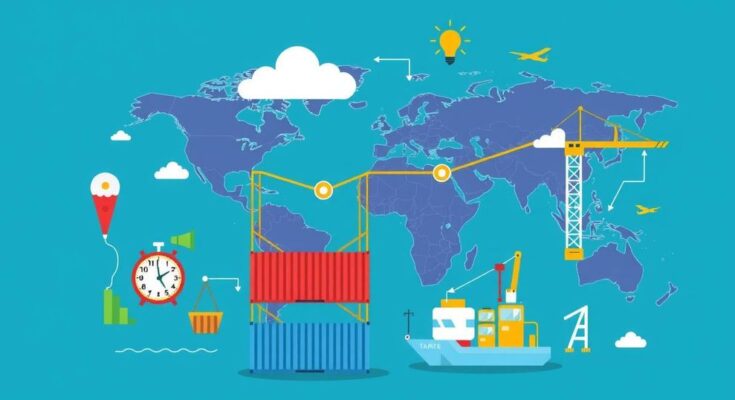The White House states that India’s rigorous testing creates high costs for U.S. businesses, hindering exports which could rise by $5.3 billion yearly if barriers are removed. An executive order signed by Trump highlights India’s tariffs and introduces reciprocal tariffs from the U.S., aiming to rectify trade imbalances and enhance economic relations between the two nations.
The White House has indicated that India’s stringent testing protocols across various sectors create significant costs for U.S. companies seeking to sell their products. According to their analysis, removing these barriers could potentially increase U.S. exports by at least $5.3 billion each year. This assertion underscores the impact of India’s trade practices on American businesses and the broader economic relationship between the two nations.
An executive order was signed by President Trump titled ‘Regulating Imports with a Reciprocal Tariff to Rectify Trade Practices that Contribute to Large and Persistent Annual United States Goods Trade Deficits.’ During the signing ceremony in the Rose Garden, he referred to the day as “Liberation Day,” proclaiming April 2, 2025, as the date “American industry was reborn.” This order addresses the tariffs imposed by India on U.S. products and highlights discrepancies in tariff rates between the two countries.
The executive order emphasizes that while World Trade Organization (WTO) members committed to binding tariff rates on a most-favored-nation (MFN) basis, they did not agree to maintain uniformly low rates. As a result, the United States boasts one of the world’s lowest average MFN tariff rates at 3.3 percent, whereas India imposes a significantly higher average rate of 17 percent. Notably, discrepancies exist within specific product categories, where U.S. tariffs on automobiles starkly contrast with India’s, showcasing rates as high as 70 percent.
Additionally, the U.S. executive order indicates that for various goods, the United States imposes much lower tariffs compared to countries like Brazil and India. For instance, while the U.S. levies a mere 2.5 percent tariff on imported passenger vehicles, India imposes a staggering 70 percent charge. In comparison, for network switches, the U.S. maintains a 0 percent tariff, whereas India imposes a 10 percent rate.
Trump elaborated on tariffs during the announcement, displaying a chart detailing the rates imposed by nations on U.S. exports, which highlighted India’s 52 percent tariff. In response, the United States will introduce discounted reciprocal tariffs of 26 percent on India. He addressed India’s trade practices, remarking on their unbalanced nature: “You’re not treating us right.” He reiterated that India has charged excessively high tariffs for years while the U.S. has maintained lower rates for a significant period.
In summary, the White House’s recent statements and the executive order reveal a growing concern over India’s trade practices, notably the high tariffs imposed on U.S. goods. The potential for increased U.S. exports underscores the necessity for addressing these barriers. The executive order seeks to establish a more equitable trade environment, highlighting discrepancies in tariff policies that disadvantage American industry. Such measures are deemed critical to fostering a balanced and mutually beneficial economic relationship between the United States and India.
Original Source: m.economictimes.com




